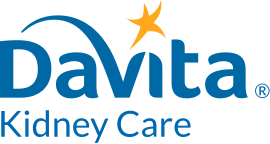By Silvia German, RN, CNN, Education Manager with the DaVita® National Clinical Education Team
What is hemolytic uremic syndrome?
Hemolytic uremic syndrome (HUS) involves three disease processes:
- Microangiopathic hemolytic anemia– An obstruction in or narrowing of the small blood vessels within the kidneys causing the breakup of red blood cells (RBCs) as they try to pass through
- Thrombocytopenia– An abnormal decrease in blood platelets or thrombocytes (cells that promote blood clotting)
- Acute renal failure– Kidneys suddenly fail and no longer work well enough to keep someone alive without dialysis or a kidney transplant
There are two variations of HUS. D+HUS is preceded by a gastrointestinal infection and D-HUS has different causes. D-HUS is less common, while D+HUS accounts for 95 percent of all cases.
D+HUS: Who is affected?
D+HUS occurs predominantly in children between the ages of 6 months and 4 years. Adults older than 60, or those with an impaired immune system, are also at greater risk of developing HUS. Both sexes and all races are equally affected.
What causes hemolytic uremic syndrome?
D+HUS follows a gastrointestinal infection with a strain of shiga toxin-producing Escherichia coli (E. coli) bacteria. The majority of E. coli strain is harmless and normally present in the gut of humans and warm-blooded animals. Shiga toxin-producing E. coli, however, are not normal in the human gut and release a poisonous substance that causes diarrhea, intestinal bleeding and damage to the bowel walls. After entering the bloodstream through the gastrointestinal mucous membranes, shiga toxin can cause damage to the thin layer of cells that line the inside of small blood vessels causing them to clot.
Shiga toxin can also be directly toxic to kidney cells. This process sets the syndrome in motion. The large amount of platelets used to promote clotting causes thrombocytopenia in the overall blood supply, with bruising and bleeding elsewhere in the body. The partially obstructed small blood vessels, including those within the kidneys, damage RBCs trying to pass through, causing hemolytic anemia. Finally, the decrease in blood supply and oxygen to the kidneys causes acute renal failure.
Signs and symptoms of hemolytic uremic syndrome
If a gastrointestinal infection after several days of diarrhea progresses to HUS, signs and symptoms may include:
- Bloody diarrhea
- Vomiting and abdominal pain
- A low-grade fever
- Lethargy, weakness and irritability
- Paleness
- Small unexplained bruises on, or bleeding from, the nose and mouth
- Blood in the urine
- Swelling of the face, hands and feet
- Decreased or no urine output
- High blood pressure
- Confusion
- Seizures (in rare cases)
Diagnosis of hemolytic uremic syndrome
Along with a physical exam, laboratory tests are used to diagnose HUS. Here are some things a physician looks for when identifying this condition:
- The hemoglobin, a measurement of RBCs, is typically below 8 g/dL (normal range for children is 11-16 g/dL and 12-18 g/dL in adults)
- Fragmented or deformed RBCs seen under a microscope
- Decreased platelet count
- Elevated blood urea nitrogen (BUN) and creatinine due to decreased kidney function
- Blood and protein in urine
- Presence of shiga toxin-producing E. coli in stool samples
Treatment for hemolytic uremic syndrome
Due to its severity, HUS is usually treated in the hospital. Treatment may include some or all of the following:
- Replacement of fluids and electrolytes lost with diarrhea and vomiting
- Normalization of blood pressure with standard medications
- Blood transfusion for low RBC count
- Platelet transfusion to help the blood clot normally
- Plasma exchange to remove the shiga toxin from blood
- Dialysis to filter excess fluid and wastes from the blood until the kidneys recover
Prevention of hemolytic uremic syndrome
The E. coli strain producing shiga toxin is found in 1 percent of healthy cattle and their meat may become contaminated during processing. Other ways of contracting the disease include:
- Drinking un-chlorinated water
- Eating contaminated fruits and vegetables
- Swimming in contaminated pools or lakes
- Visiting a petting zoo
- Having close contact with ill people in a day care or nursing home setting
Prevention is therefore based on good personal hygiene, including frequent and thorough hand washing. Kitchen rules should include keeping cooking utensils and surfaces clean, cooking meat well enough to destroy viable bacteria, washing fruits and vegetables under running water, and drinking milk, juice or cider that is pasteurized.
Conclusion
It is estimated that D+HUS affects about two in every 100,000 people per year, with peak outbreaks between the months of June and September. Complications can be severe, including chronic kidney failure, heart problems, strokes and coma. Death is usually linked to a non-renal-related problem. However, with timely and appropriate treatment, the survival rate in D+HUS is significantly high. While approximately two-thirds of children with D+HUS require short term dialysis, most regain kidney function and recover fully.


